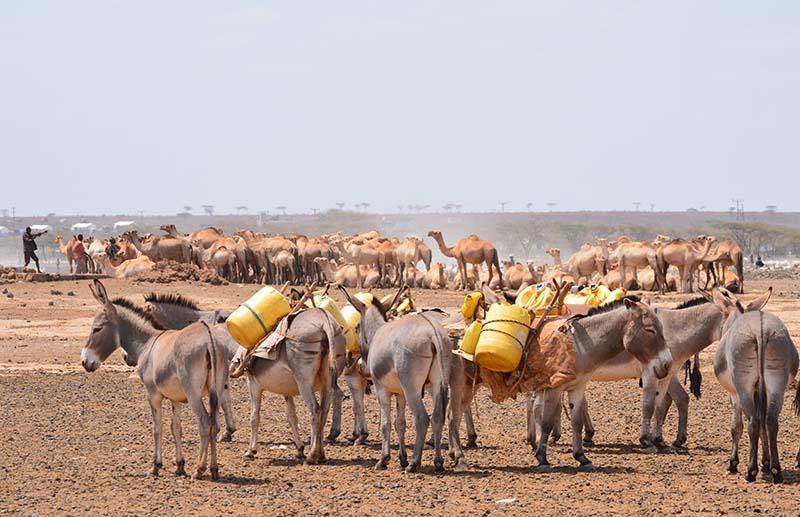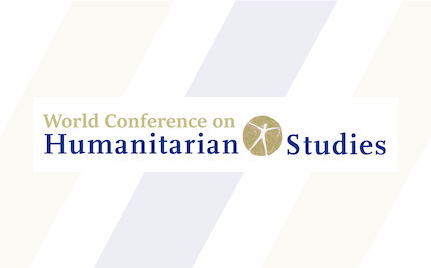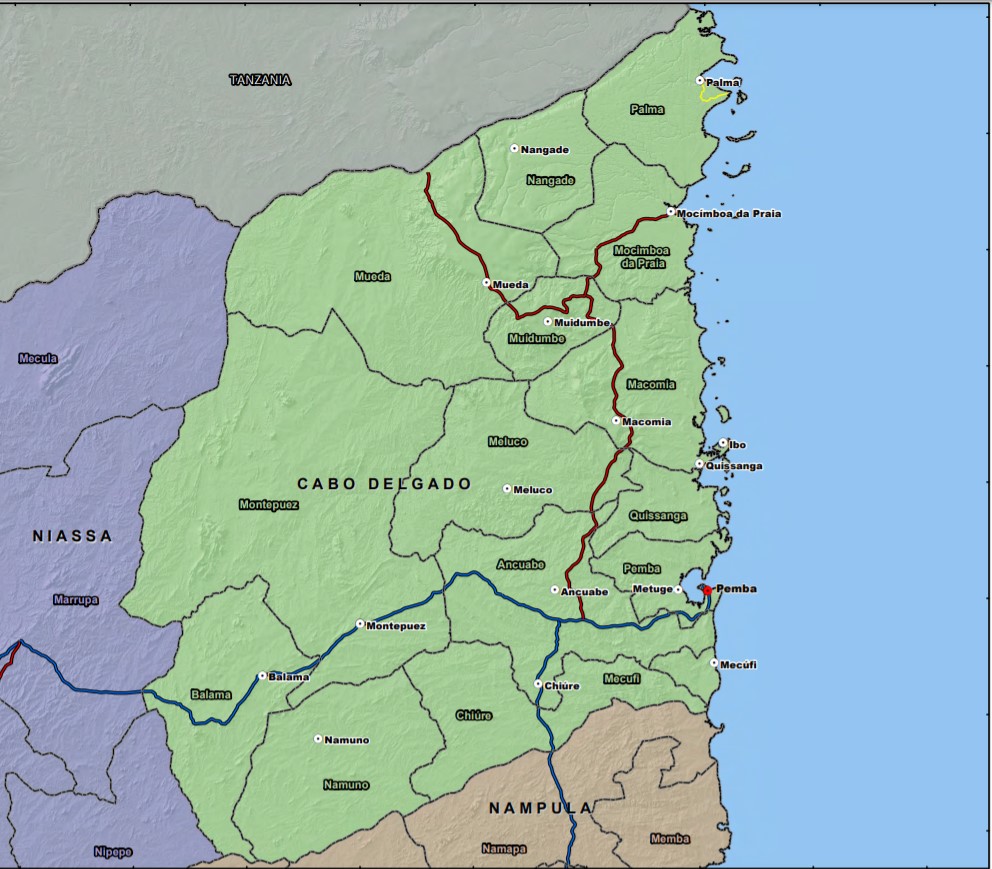In May 2022, Centre for Humanitarian Change released its report “Anticipatory Action to drought induced crisis in Kenya and Somalia”, which tracked two years’ worth of drought impact and aid response data between 2020-2022. The findings informed “Dangerous Delay 2: The Cost of Inaction” published by Jameel Observatory, Oxfam and Save the Children.
Current context of drought in Kenya and Somalia: Three consecutive failed rains in the drylands of Northern Kenya and Somalia are spelling the worst drought in 40 years. Combined with the effects of locust invasions, COVID-19 and now the global food and fuel price crisis, household resilience is now being overwhelmed (although this would likely have happened earlier without the investment in resilience building). Six million people in Somalia need food assistance to prevent ‘Crisis’ and Kenya’s food insecure population has almost doubled to 3.1 million in the last year. Unlike the response to drought in 2017, the aid system has largely failed to act early enough and at scale to reduce the impact of the current crisis.
Purpose and methodology of the report: Researchers interviewed nearly thirty community members and regional policy makers, focusing on anticipatory action (AA), defined as ‘giving assistance based on the expectation that a crisis is coming, but before humanitarian needs are severe, to safeguard lives and livelihoods’. CHC analysed food security projections and climate forecast data to produce a detailed timeline of the crisis then looked at examples of – and barriers to – actors using this data to intervene and prevent or mitigate impacts of crisis on households.
Key findings:
- Early warning forecasts and projections have improved and are considered credible. IGAD, NDMA and FEWSNET are used and trusted. Analysis is increasingly owned and led by governments. However, although community-level early warning systems are useful, they are not being incorporated into the formal system.
- The timing for triggering AA for slow-onset emergencies in fragile areas of East Africa is AA could have been triggered in Somalia as early as August/September 2020 and for Kenya in January/February 2021. The impact of seasonal shocks depends on recent history of shocks and type of livelihoods. Context matters, raising questions of how to trigger AA for sub counties in peril, if there’s no national emergency.
- Challenges remain in interpreting and using early warning analysis to trigger Early warning systems assume a drought is linear with a before, during and after. This doesn’t account for the complexity of prolonged or consecutive droughts, or the secondary impacts on social issues or health. Decision makers lack nuance to trigger AA appropriately.
- There is evidence of strong capacity and resources for anticipatory action in local and informal systems but they’re not thinking ‘system-wide’. Most respondents in Somalia reported that community-based systems were the fastest to respond in crises. But strategies to link informal and formal systems of AA are still not working in practice.
- Small scale forecast-based financing has demonstrated impact, but it is not widely available for majority of actors. Funding for AA needs to be flexible, agile and available to community leaders, NGOs and governments. Pre-positioned resources are released for emergencies not forecasts, which is the essence of the dangerous delay. (The AA pilot funded by the Central Emergency Response Fund and the World Bank in Somalia provides some important learnings).
- Action taken by most stakeholders was more appropriate for relieving the impacts of the drought than protecting livelihoods and strengthening systems. AA decision making and triggers are still linked to emergency response. Opaque governance of the response and lack of clarity of who is accountable persist and undermine confidence in the systems. In both countries, responses were seen to be primarily reactive, in practice, it’s too little too late.
Recommendations:
- Develop a common vision and strategy for anticipatory action in different contexts. Define how AA relates to a continuum response model including disaster risk reduction, early action, early response and response. Ensure the informal and formal systems are in dialogue, so local actors participate in decisions. Only with a shared vision will we realise the full value and opportunity of AA. The strategy must resolve the following questions, which attracted the most uncertainty:
- How should we address the age-old problem of early warning-early action gaps? Forecasting is significantly improved, yet AA is not triggered appropriately, early or for long enough.
- What are the most appropriate actions, and for whom, and when, to mitigate the most negative impacts of crisis? – How big, in terms of severity and magnitude, and for what crises, should AA be triggered? Is it the first step in a continuum or can it take place at any stage of a crisis, if it’s defined as a forward planning tool?
- Where does AA fit within international aid / crisis response / local systems? Where on the humanitarian / development nexus is AA? AA should be an integral behaviour or feature of all development and humanitarian planning, budgeting, and response, not a stand-alone structure.
- Integrate AA into existing systems and use a nexus framework for defining a future shared vision. The recommendation is to integrate AA into existing formal structures of government, development, resilience and humanitarian programming and to ensure better participation of the informal/community-based systems. This will avoid creating new structures, new funding streams and new debates on the value and objectives of AA. By simplifying and standardising formal national and international level triggers for AA, we allow earlier “no regrets” decisions to be made. Eg. clarify funding release mechanisms to enable contextual, flexible and adaptive sub-national and local decision making.
- Localise anticipatory action by:
- Integrating informal/community systems’ early warning approaches into formal systems, ensuring AA decisions to be triggered locally.
- Allowing AA to be triggered locally in sub-counties or districts for areas prone to climate shocks but lacking early action systems (eg. in arid parts of coastal counties, such as Kwale in Kenya and those bordering Somalia).
The report also listed a number of tactics, in addition to the above main recommendations, which would ensure that lessons continue to be learned and acted upon in time:
- Producing more regular updates of food security and nutrition outcome projections through real-time monitoring and tools eg. household economy analyses.
- Strengthening AA triggers and thresholds at the lower end of tiered severity classification systems (for example, IPC Phase 2 ‘Stressed’, or ‘Alert’ in the NDMA early warning system).
- Studying how forecasts and projections can offer a more holistic and forward-looking package of innovations and AA trigger mechanisms eg. paying more attention to health, nutrition, gender, social inclusion, social capital, and issues in addition to water trucking, livestock offtake and livestock feeds.
Here is a link to the final report Anticipatory action Final Report







